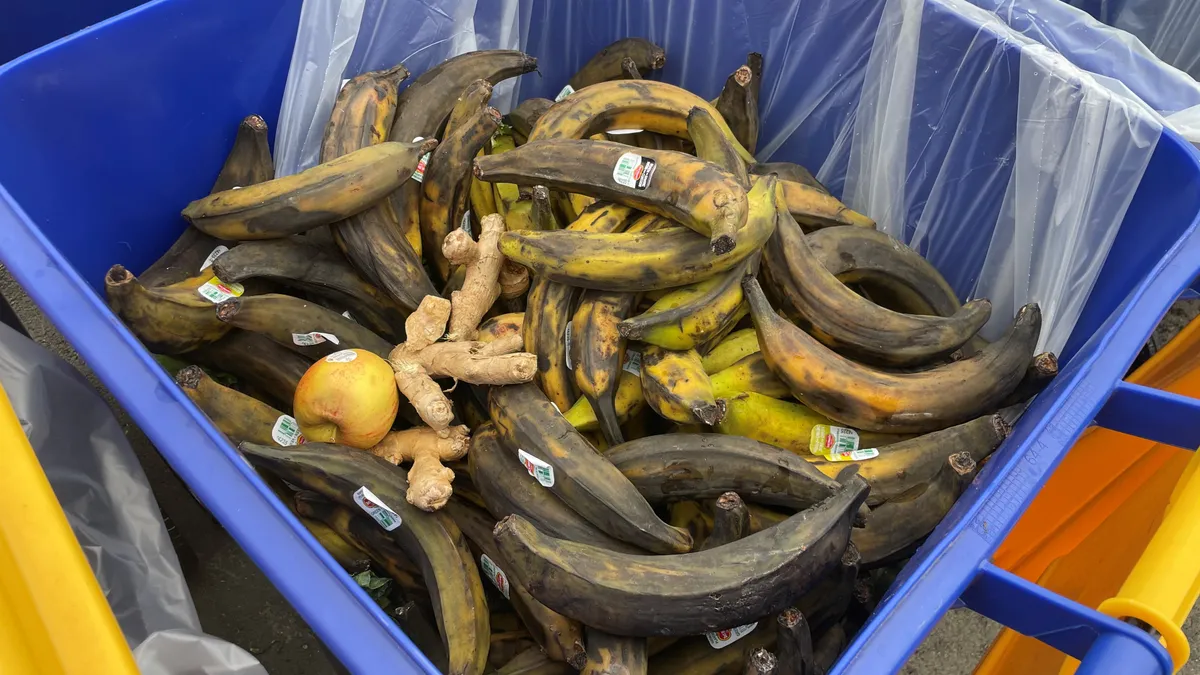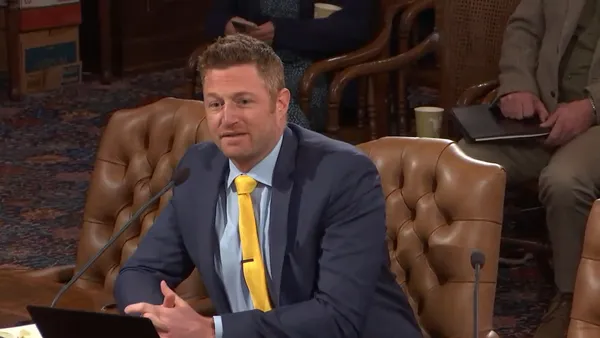Food waste continues to represent the biggest volume of material in municipal solid waste landfills nationwide, but new efforts may be turning the tide toward reducing volumes, according to a pair of new reports released this month.
The U.S. has seen a 4.8% increase in the total amount of surplus food generated since 2016, according to new data from nonprofit ReFED. But a closer look shows that total surplus has actually declined slightly the last few years, falling 0.6% since 2019 overall, ReFED found.
"We started to flatten off," ReFED Executive Director Dana Gunders said during a webinar Friday. "We're hoping that this means we're past that peak waste, as I like to think of it."
The data comes after ReFED has spent the last 18 months taking a renewed look at the effect of different strategies on reducing food waste, which it says is still responsible for 24% of landfill inputs.
The information also landed shortly after the EPA released its own report on food waste, which found that the manufacturing and processing sector generated about 40 million tons of food waste in 2019, while the food services and residential sectors each wasted about 27 million tons.
The EPA report found that between 2016 and 2019, there was a roughly 6% increase (from 328 to 349 pounds) in the amount of food wasted per person annually. That runs counter to the federal government’s goal of reducing the amount to 164 pounds per person by 2030. But the report also noted that in 2021, 25 states proposed food waste legislation, which has yet to be reflected in federal data.
Meanwhile, the federal government has begun to ramp up its own efforts to tackle the issue, signing onto a food waste reduction commitment at the North American Leaders Summit earlier this year. The Bipartisan Infrastructure Law and the Inflation Reduction Act have also allocated hundreds of millions of dollars to the EPA for programs that could finance food waste reduction strategies.
Claudia Fabiano, a specialist with the EPA's sustainable food management program, said that funding has begun to change the landscape for food waste measurement and reduction strategies.
"There’s unprecedented investment happening in the government space on these issues," Fabiano said during the webinar. "We've never had that kind of money before."
ReFED also found that while private investments in food waste solutions reached a peak in 2021, recycling-based solutions continue to attract major dollars. That sector went from receiving $109 million in 2020 to $557 million in 2021 and $881 million in 2022, according to ReFED's Capital Tracker.
Much of 2022’s increase came from BlackRock's $700 million leveraged buyout of anaerobic digestion company Vanguard Renewables. AgroFresh Solutions had the second biggest food waste deal last year, agreeing to a $158 million leveraged buyout from Paine Schwartz Partners.
Both EPA’s Fabiano and ReFED’s Gunders acknowledged limitations in their own datasets. The latter compiled more than 80 sources to estimate food waste, but Gunders said the nonprofit may be working from models or academic studies that in some cases are over a decade old.
Those differences were evident in the numbers presented by each source for food waste destinations. ReFED estimated that in 2019, 21% of food waste was composted while 2.7% was sent to anaerobic digesters. The EPA inverted the categories in its own estimates: It reported that 3.7% of food waste was composted while 16.6% was sent to anaerobic digesters.
The experts said such disagreements were good to show how models can differ. They hope that over time they’ll come closer to an accurate picture for each sector’s food waste. Getting there, Gunders said, would require greater funding and support for systems-level analyses.
"Carbon emissions were really hard to do in the 1990s; there were so many foundations that needed to be laid before they could really start to compare and the EPA could have its annual inventory. It's not that dissimilar to food waste," Gunders said.















